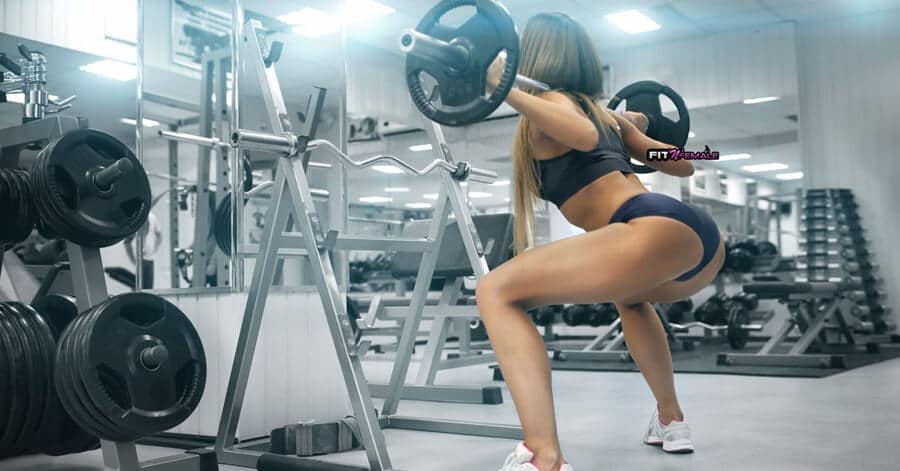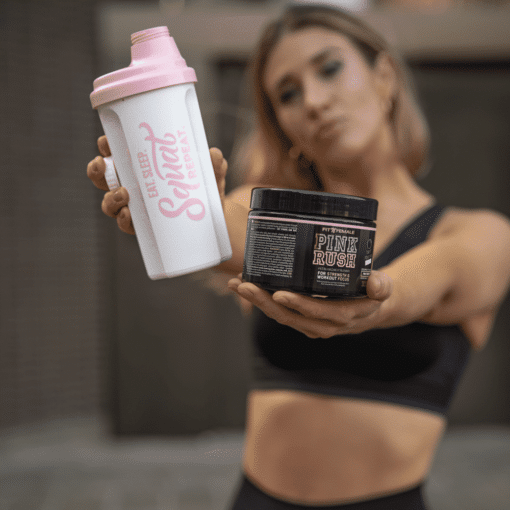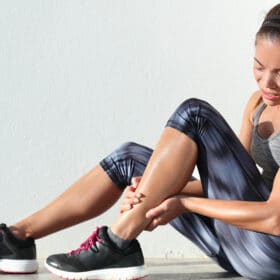If you ask an experienced bodybuilder what you should always do on a leg day, the answer is usually simple and straightforward: squats. However, when it comes to things you should never do, you'll get a plethora of answers, with possible causes of failure lurking everywhere. To provide a little clarity, we have compiled a list of the nine biggest taboos on leg day in the following article.
Taboo 1 - Never look for an easy way out
There are a handful of tough athletes for whom a leg workout is only considered a success if they can only manage the stairs from the gym to the underground parking garage with a limp and with the help of the banister. You don't necessarily have to consistently emulate these athletes, but it is definitely worth considering at least copying their motivation. After all, their leg training successes speak for themselves. You just have to accept that leg training is not a child's birthday party, but a really challenging event that you have to do every few days with full concentration if you really want to have muscular legs. So, stop replacing heavy exercises like squats with simpler alternatives like the leg press. You won't gain anything, because as scientific studies have shown, exercises with free weights result in a significantly higher release of growth hormone than guided exercises on machines. If motivation is your main problem, then you should look for a training partner who loves leg training and will really push you on Leg Day.
Taboo 2 - Avoid extreme internal and external rotation of your feet
While exercises such as leg extensions or leg curls allow you to vary the focus of the load by varying the position of your feet and thus stimulate growth, this should be avoided when performing exercises where your feet are fixed to the floor or a pressure plate. These exercises include all forms of squats and the various versions of the leg press. The reason for this taboo is the fact that the extreme internal or external rotation of the feet leads to an unfavorable distribution of the training load. As a result, your knees are put under significantly more strain than is sensible and healthy, putting you at risk of serious injuries in both the short and long term. In order to perform squats and the like safely, you should always make sure that your feet are only slightly rotated outwards, as this enables a natural movement sequence. However, internal rotation should be completely avoided.
Taboo 3 - Never lift off your heels
If you've ever watched one or two athletes on the leg press, you're sure to have noticed that there are those who lift their heels off the pressure plate at the negative extreme of the movement. However, you shouldn't copy this approach under any circumstances, as it will put you at a disadvantage. In fact, lifting your heels is not a sign of special training experience, but merely of incorrect positioning of the feet on the pressure plate or a lack of mobility in the ankle joint. The major disadvantage of this practice is obvious, because by reducing the contact area between your body and the device, you are also reducing the potential pressure force that you can exert. In addition, this comparatively unnatural position focuses the overall load on your knee, which makes injuries more likely to occur. So if you want to maximize your performance and minimize your risk of injury, keep your heels on the pressure plate.
Taboo 4 - Your knees must never rotate inwards
This is the most common mistake that can be observed in gyms around the world when performing lower body exercises, especially squats and leg presses. This should set alarm bells ringing, as the internal rotation means that a large part of the training load is no longer held by the muscles, but is transferred to the ligaments, tendons and knee joint, resulting in a considerable risk of injury. The cause of this error is usually not even conscious misconduct, but weak abductors. To remedy this, you should first strengthen your abductors and reduce your training weight for squats and similar exercises. Internal rotation is also an unmistakable sign that your training weight is too high.
Taboo 5 - Never give away performance potential
Many exercisers have problems with the mobility of their pelvis, which in most cases results in reduced flexion depth during squats. Instead of doing something about this situation, it is common practice to simply put up with it and give away considerable growth and performance potential. After all, you want to have good-looking legs, so you also need to work on your weak points. In the specific case of the restriction of hip mobility or flexion depth, the solution is quite simple. You just need to make sure that your heels are slightly elevated during the exercise, as this will allow you to bend much deeper. On the one hand, you can buy special weightlifting shoes for this purpose, which are definitely worth the money. However, if you don't want to spend any money, you can also use some weight plates to place your heels on. It should be noted, however, that investing in weightlifting shoes is much safer.
Taboo 6 - Never neglect your adductors
Adductor training is an essential part of a sensible leg workout, as the adductors make a significant contribution to stability and the correct sequence of movements during complex basic exercises. It is no coincidence that the majority of injuries that occur during leg training affect the adductors, which are neglected by most athletes. So you should give yourself a jolt, jump over your shadow and train your adductors.
Taboo 7 - Never round your back
Every athlete should know that rounding the back is one of the absolute deadly sins of strength training. Regardless of the prevalence of this golden rule, there are still a large number of trainers who make this mistake unknowingly. However, this seemingly small mistake can have a major impact, as the shifted angle at which the training load acts on your spine and therefore also on your intervertebral discs massively increases the pressure on them. This can result in both short-term and long-term damage to the spine. To prevent your back from rounding, you basically have two options. Firstly, you can reduce the training weight, as rounding is an unmistakable sign that the load is too high and your muscles cannot cope with it properly. You should also make sure that you are always looking straight ahead, which will largely prevent the rounding from occurring.
Taboo 8 - Never look up
This taboo follows on almost seamlessly from the previous taboo. As already mentioned, you should make sure you look straight ahead when doing squats so that your back doesn't round. However, this does not mean that you should overdo it at this point by bending your neck so far that you are looking at the ceiling. This bend results in another unhealthy rounding of the spine. This time, however, in the area of the cervical spine, which puts extreme strain on the intervertebral discs there, especially if you are training at a high weight. So keep your gaze directed forwards.
Taboo 9 - Never underestimate the interaction of strength and cardio training
You should be aware that there is a not insignificant interaction between strength training and cardio training, not least because the same muscle groups and energy stores are involved. So if you want to achieve your maximum performance on Leg Day, you should take an extra rest day between intensive cardio units and leg training to be on the safe side.










